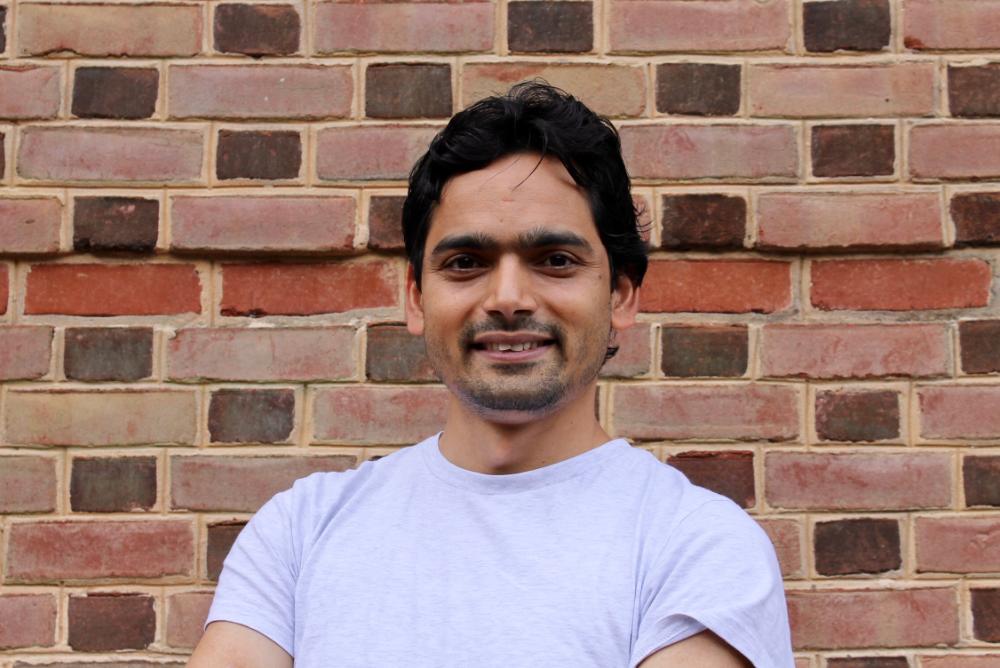Arts & Sciences Events
[PAST EVENT] Sudip Paudel, Applied Science- Ph.D. Dissertation Defense
Location
Integrated Science Center (ISC), Room 0280540 Landrum Dr
Williamsburg, VA 23185Map this location
Access & Features
- Open to the public

Title: Analysis of Calcium Activity During Early Neural Development
Abstract: Cells typically maintain very low levels of cytosolic Ca2+ ([Ca2+]i), but transient changes in [Ca2+]i due to influxes of Ca2+ from the extracellular milieu or intracellular stores form the basis of Ca2+ activity. The occurrence of diverse patterns of activity attributes, such as frequency and amplitude, has been considered a potential mechanism by which this simple ion can transmit signals to downstream effector molecules. These molecules in turn regulate a wide array of biological processes, including many aspects of early neural development. However, it remains unclear exactly which attributes of these Ca2+ activity events (CAEs) are translated by the effectors. Therefore, understanding the correlation between CAE patterns and gene expression during early neural development can provide critical insight into the underlying mechanisms of nervous system development and patterning. To this end, we performed both in vitro and in vivo Ca2+ imaging and image analysis during early neural development in Xenopus.
First, we compared Ca2+ activity and presynaptic neural phenotype in vitro. We found that a high frequency of low-amplitude spiking activity correlates with neural progenitors and glutamatergic phenotype. In contrast, high-amplitude spiking correlates with GABAergic phenotype and neuronal cells that are committed to differentiation (tubb2b positive cells). Further analysis using entropy measure and hurst exponent suggested that both tubb2b and GABAergic neurons display relatively predictable and persistent Ca2+ activity. These results necessitated an in vivo imaging to confirm that these characteristic Ca2+ activity patterns in vitro match those present in vivo. More importantly, because of this dramatic impact of data analysis techniques on the conclusions drawn from a given dataset, we then critically examined in vivo Ca2+ imaging literature that focuses on early neural development. In light of instances in which studies with seemingly similar experimental designs have reported dramatically different conclusions, we have outlined the potential impact of techniques that were used to determine what constituted the background signal, baseline activity, and a CAE. Finally, for our in vivo analysis, we first identified Ca2+ peak (event) detection techniques (PDTs) that were commonly used in the recent in vivo imaging literature, generated a combinatorial range of PDTs, and then assessed how application of different PDTs impact the interpretation of spatial patterns of CAEs using simulated data. Further, we constructed a composite neural plate (CNP) by integrating images from disparate tissue regions of embryos and examined spatial patterns of CAEs using all the PDTs mentioned above. Unlike previous reports, we found that spiking is not restricted to specific tissue precursors in the neural plate. But, as in our in vitro study, tissue-specific clusters of CAEs can be detected in PDT-dependent manner.
This approach involving application of multiple analytical techniques and construction of a CNP can be used more generally in studies that involve imaging of disparate tissue regions and registration of those pieces into a composite template to advance understanding of correlations between various cellular biophysical and biomolecular attributes. Further, our results reveal that application of a range of data analysis techniques can overcome the limitations associated with using only a CAE detecting pipeline.
Bio: Sudip Paudel will be working for Eurofins as a Pre-Clinical Drug Safety Scientist in Cambridge, MA. He graduated from Eastern Illinois University, Illinois with a M.S in molecular biology in 2015. Prior to this, he earned a M.S. in botany from Tribhuvan University, Nepal. For the past years, he has been conducting doctoral research under the supervision of Dr. Margaret Saha. While Sudip was involved in various projects in the lab, his main focus was on analyzing calcium activity patterns towards understanding the molecular mechanism(s) of early neural development.
Join Zoom Meeting
https://cwm.zoom.us/j/91980640878
Meeting ID: 919 8064 0878
One tap mobile
+13126266799,,91980640878# US (Chicago)
+16465588656,,91980640878# US (New York)
